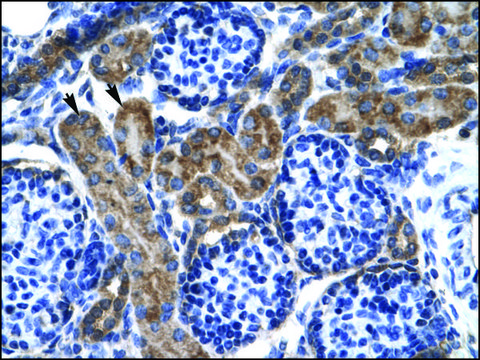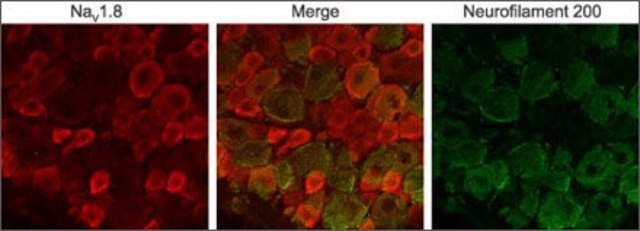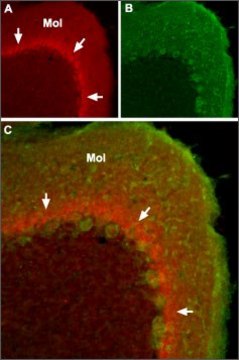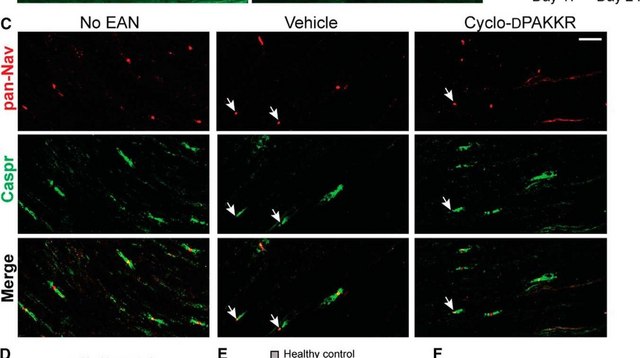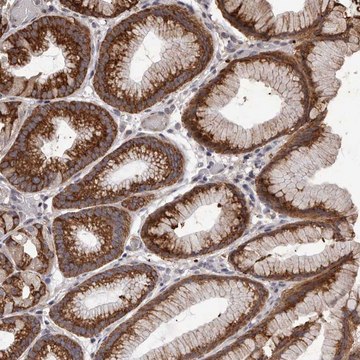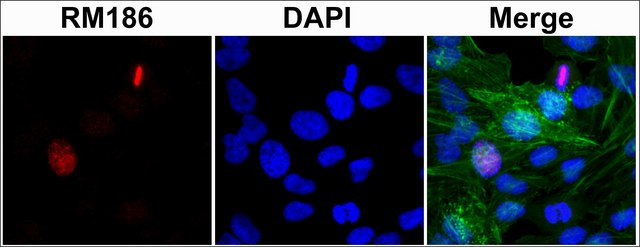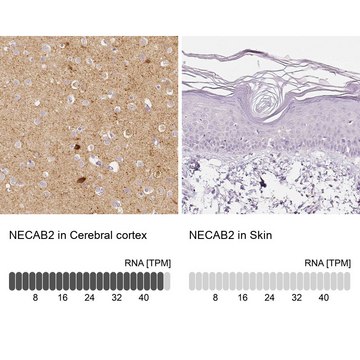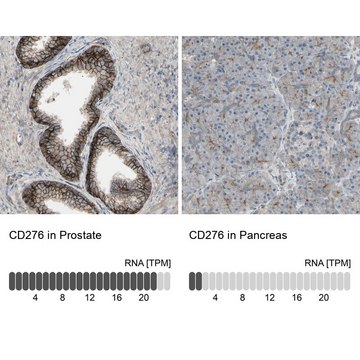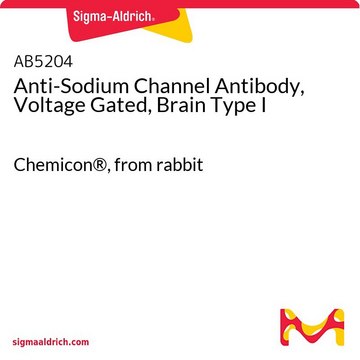P4371
Anti-Potassium Channel KCNQ2 antibody produced in rabbit
affinity isolated antibody, lyophilized powder
Synonym(s):
Anti-KV7.2, Anti-Voltage-gated potassium channel QKT subfamily member 2
About This Item
Recommended Products
biological source
rabbit
Quality Level
conjugate
unconjugated
antibody form
affinity isolated antibody
antibody product type
primary antibodies
clone
polyclonal
form
lyophilized powder
species reactivity
rat
technique(s)
western blot: 1:200 using KCNQ2 transfected HEK-293 cells
UniProt accession no.
storage temp.
−20°C
Gene Information
human ... KCNQ2(3785)
mouse ... Kcnq2(16536)
rat ... Kcnq2(170848)
General description
Specificity
Immunogen
Biochem/physiol Actions
Physical form
Disclaimer
Not finding the right product?
Try our Product Selector Tool.
Regulatory Information
Choose from one of the most recent versions:
Certificates of Analysis (COA)
Don't see the Right Version?
If you require a particular version, you can look up a specific certificate by the Lot or Batch number.
Already Own This Product?
Find documentation for the products that you have recently purchased in the Document Library.
Our team of scientists has experience in all areas of research including Life Science, Material Science, Chemical Synthesis, Chromatography, Analytical and many others.
Contact Technical Service